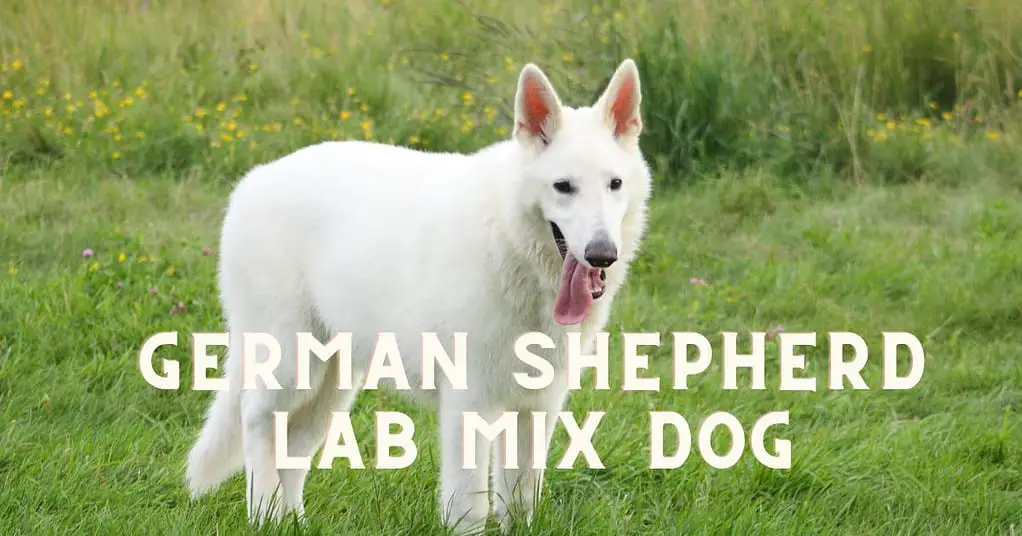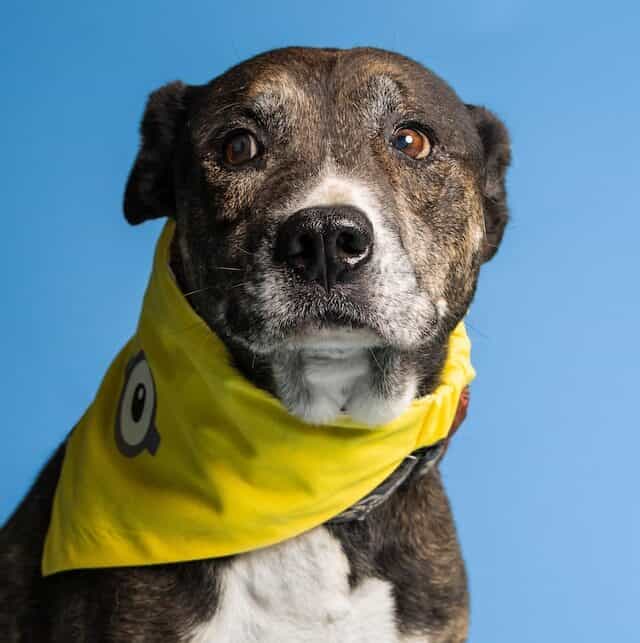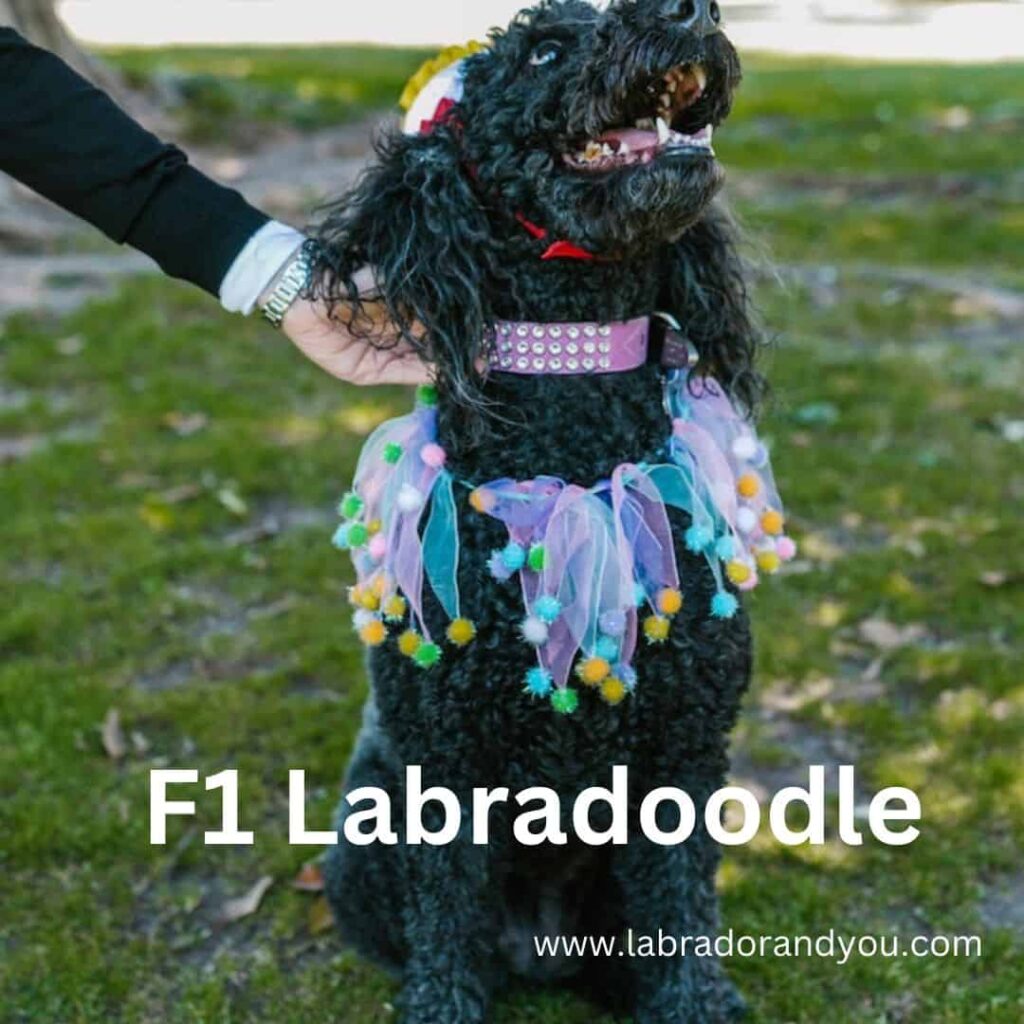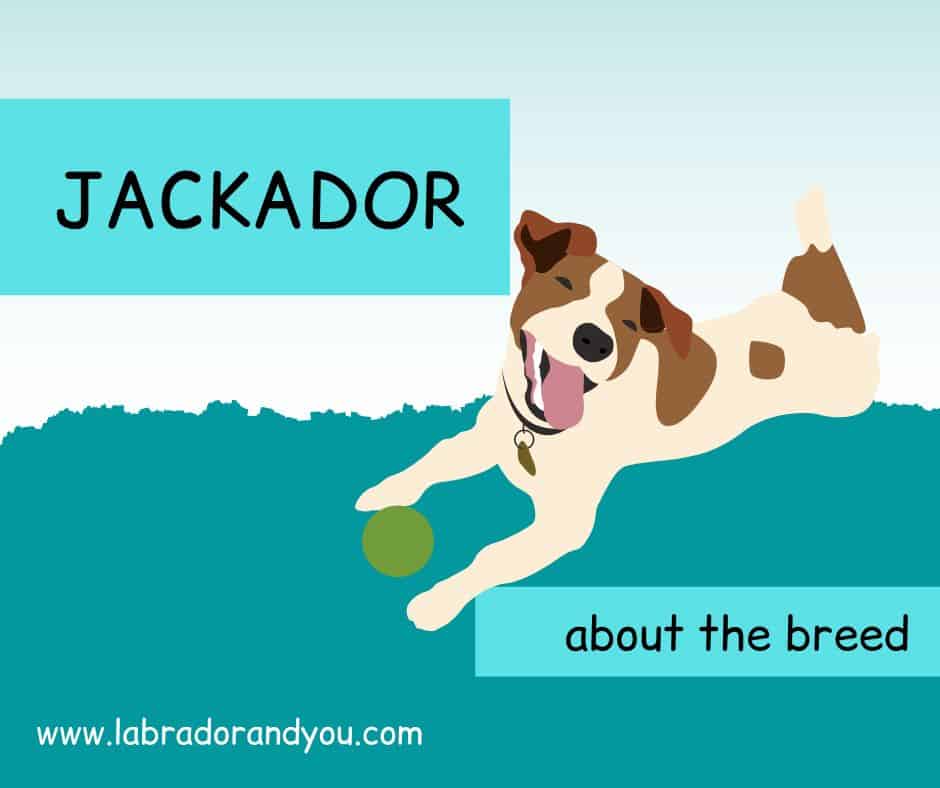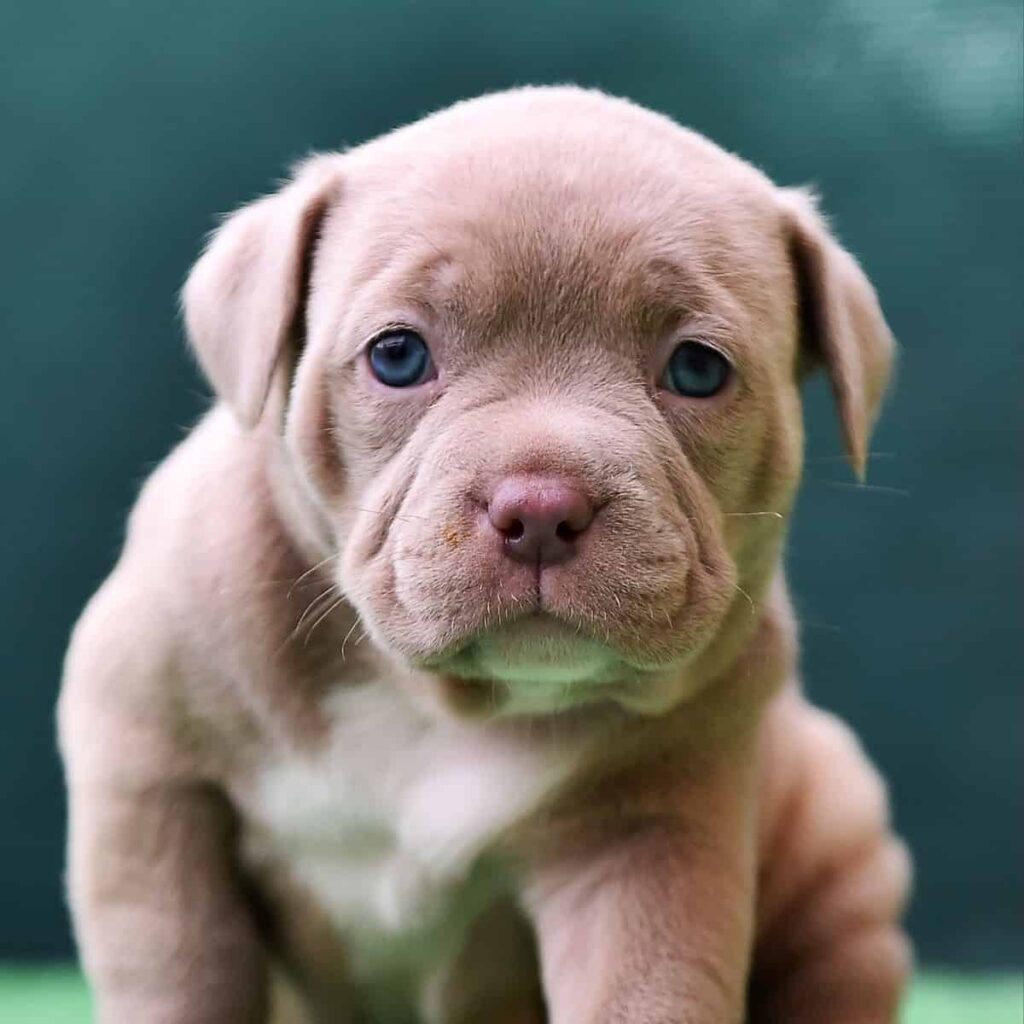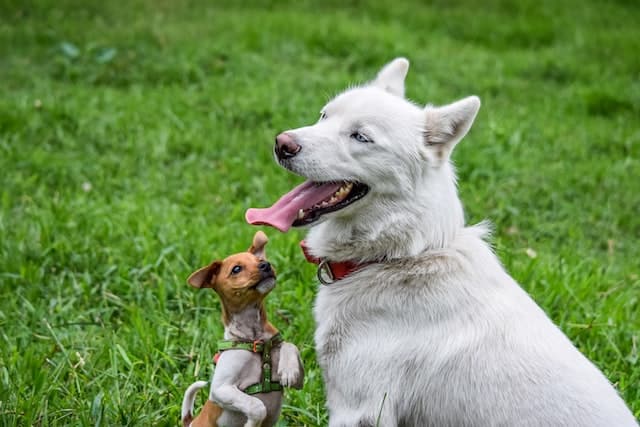Imposing in stature yet gentle at heart, the Great Dane Lab Mix, often called the “Labradane,” is a remarkable fusion of the noble Great Dane and the friendly Labrador Retriever. This unique hybrid combines the affable nature of the Labrador with the serene disposition of the Great Dane, resulting in an engaging, affectionate, and family-oriented companion.
Possessing an intriguing blend of physical traits from both parent breeds, the Labrador stands out with its commanding presence and warm, expressive eyes. The Great Dane Lab Mix combines the best of two incredible breeds, perfect for families and individuals who appreciate a large, laid-back dog with a heart full of love.
This guide offers an in-depth look at the Labradane, examining its temperament, health considerations, grooming needs, exercise regimen, and more. Let’s unravel the layers that make the Great Dane Lab Mix a truly special breed!
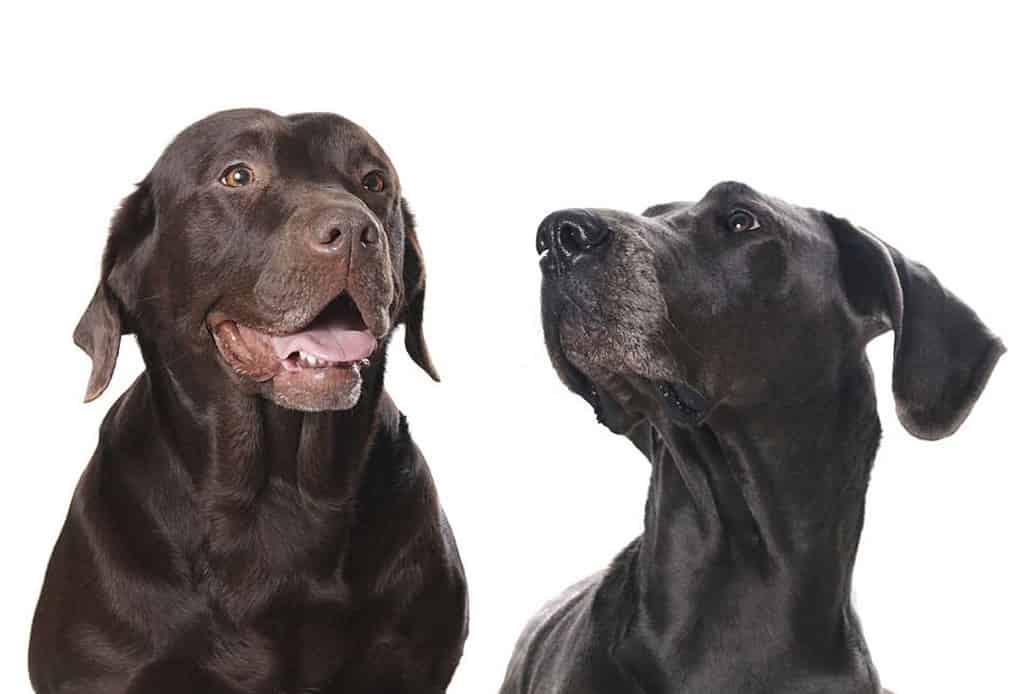
Labradanes: History Of The Breed
Labradanes or Great Labradanes is a designer breed created in recent decades. The exact origins of the Labradane are not clear. Like many hybrid breeds, it likely originated in the United States within the last few decades, perhaps around the late 20th or early 21st century.
The Labrador Retriever and the Great Dane, the parent breeds of the Labradane, have a rich history.
Labrador Retrievers originated in Newfoundland, Canada, and were bred as working dogs for fishermen. They were named after the Labrador Sea, where they were found working. Labradors are recognized for their friendly nature, intelligence, and high energy levels, which make them excellent family dogs and service dogs.
On the other hand, the Great Dane has a history that dates back thousands of years. Despite the name, Great Danes are not from Denmark but Germany. They were bred as boar hounds, hunting and protecting estates. Moreover, they are known for their size, strength, and noble appearance, yet despite their imposing stature. They are gentle, friendly, and calm.
Labradane Main Characteristics
Labradanes boast many unique and appealing characteristics inherited from their parent breeds. The main characteristics of the labrador retriever and dane mix include:
- Large size: Labradanes are typically quite large due to the significant size of both parent breeds.
- Diverse appearance: These mixed-breed dogs display various colors, coat types, and physical traits from either or both parent breeds.
- High intelligence: Known for their quick learning ability, these designer dogs are intelligent and trainable.
- Moderate energy levels: They do enjoy playtime and exercise. However, Labradanes generally have moderate energy levels compared to other large dog breeds.
- Sociable nature: They have a friendly, gentle temperament inherited from both parents. These dogs get along well with people and other animals alike.
- Adequate food requirements: Labradanes require a balanced diet that meets the nutritional needs of their size and activity level.
- Grooming needs: They have a short coat that needs regular grooming to prevent shedding-related issues.
- Exercise requirements: To stay healthy and happy, these large dogs need regular walks, play sessions, and mental stimulation.
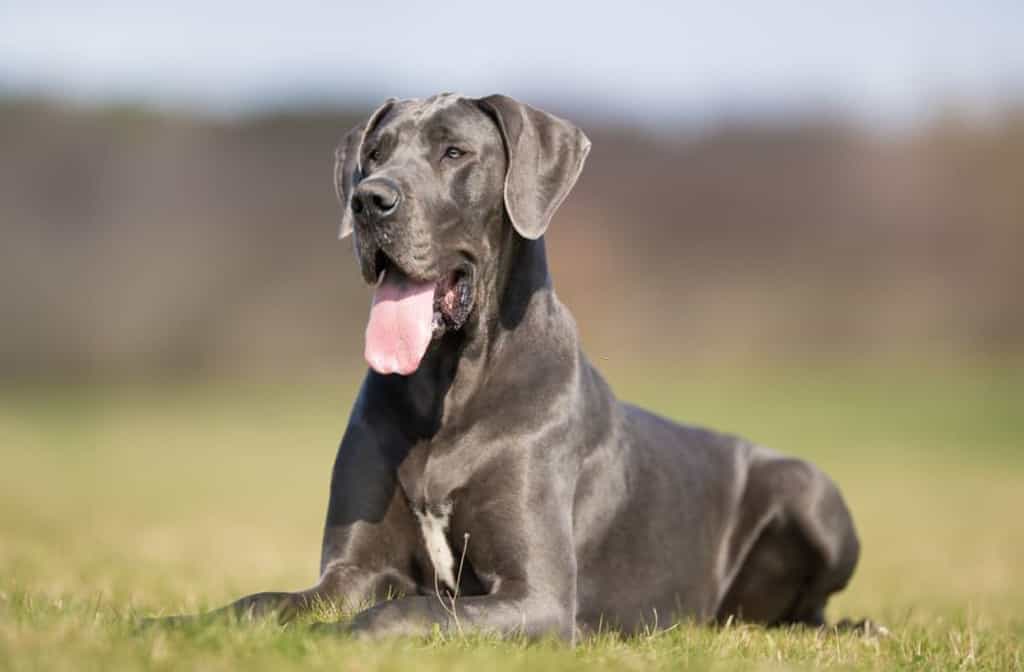
Size
One of the most notable features of a Labradane is its impressive size. These gentle giants typically weigh between 100 and 180 pounds. Their stature reflects their Great Dane heritage with long legs and tall frames while maintaining some Labrador retriever characteristics.
Given their large physical presence, potential owners must have adequate space to accommodate this giant dog comfortably. A spacious home with a fenced yard is ideal for allowing them to stretch out.
Appearance
A Labradane’s appearance combines its parents’ distinct features, creating a unique and striking look. Great Dane Lab mix dogs often have a muscular build and long legs. They inherit the classic Labrador Retriever head shape and floppy ears.
One interesting aspect of their appearance is that there’s no guarantee about what color your dog might be. Labs come in shades like chocolate, black, or yellow. Great Danes offer even more options like brindle and harlequin patterns.
The coat type may also vary but is generally short and glossy, highlighting their strong physique.
Intelligence & Trainability
Labradanes are an intelligent and fairly easy breed, owing to their Labrador Retriever ancestry. They desire to please their owners and excel in dog sports like agility or retrieving games.
Training sessions must be structured and fun-filled with interactive toys, treats, and positive reinforcement. Their high intelligence also means that they can quickly learn tricks and commands. It makes them great pets for families looking for an entertaining and obedient companion.
However, being big dogs with strong wills requires firm training from the owner during the early puppyhood years.
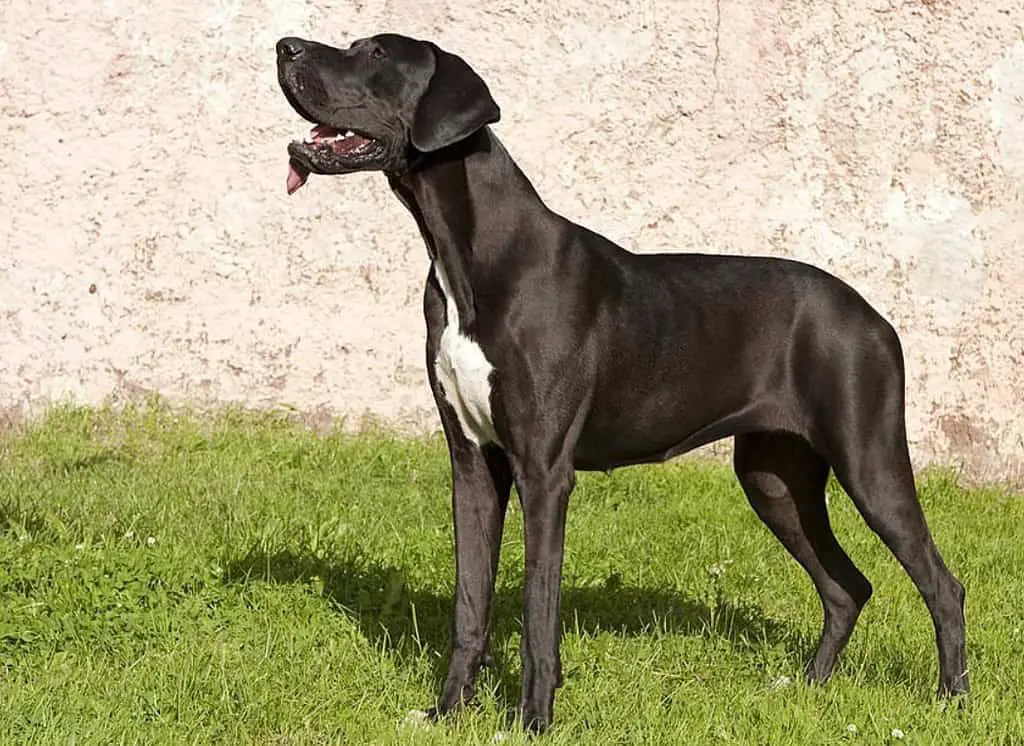
Energy Levels
Labradane puppies may possess high energy levels due to their Labrador Retriever lineage. They love being outdoors and enjoy activities like going for walks, running, and swimming.
This breed requires moderate exercise daily to maintain good health and prevent boredom-induced destructive behaviors.
Their playful nature makes them great companions for active families with kids or other pets. However, ensure they get enough rest as rapid growth may cause heat exhaustion or digestive issues.
Do you lead an active lifestyle and have the time and space required to keep up with this energetic breed? If yes, these designer dogs might be the perfect furry addition to your family.
Sociability
Labradanes are sociable dogs and tend to enjoy the company of visitors. They make great family pets due to their friendly temperament and love for social interactions.
This gentle giant inherits their sociability from both parents, who are also friendly dogs. Labradanes are highly affectionate towards their owners. They make excellent companions for those seeking a loyal pet that loves spending time with the family.
Food Requirements
Labradane puppies require a well-balanced, nutrient-dense diet to maintain their health and energy levels. Depending on their age, size, and activity level, they may need different food types or portion sizes.
Feed them high-quality dry dog food formulated specifically for large breed dogs. When choosing dog food for your Labradane, ensure the first ingredient listed on the label is a meat-based protein. Chicken or beef must be preferred instead of fillers like corn or soy.
These dogs have active lifestyles. Supplementing their diet with high-protein treats helps support muscle growth and repair after exercise.
Labradane Puppy Feeding Schedule
| Time | Meal |
|---|---|
| 7:00 AM | Breakfast – 1/4 of daily ration of large breed puppy food |
| 10:00 AM | Lunch – 1/4 of daily ration of large-breed puppy food |
| 1:00 PM | Breakfast – 1/4 of the daily ration of large breed puppy food |
| 4:00 PM | Mid-afternoon snack – large breed puppy biscuits |
| 7:00 PM | Dinner – 1/4 of daily ration of large breed puppy food |
| 10:00 PM | Late-evening snack – last 1/4 of large breed puppy food |
Labradane Adult Feeding Schedule
| Time | Meal |
|---|---|
| 7:00 AM | Breakfast – 1/2 of daily adult large breed dog food ration |
| Noon | Mid-day snack – healthy dog treats or veggies |
| 7:00 PM | Dinner – remaining 1/2 of daily adult large breed food |
Grooming
Labradanes puppies, a mix of Great Danes and Labrador Retrievers, have different grooming needs. Due to their short coats of fur, they require low-to-moderate maintenance. Regular brushing with a slicker brush help keep the coat shiny and tangle-free.
Aside from daily brushing and ear cleaning, bathing is only necessary when it’s time for them to be cleaned or during shedding season. Do not over-bathe them, as it can damage their natural oils and lead to dry skin.
Maintain hygiene by trimming nails every few weeks to prevent accidental scratches on furniture or while playing.
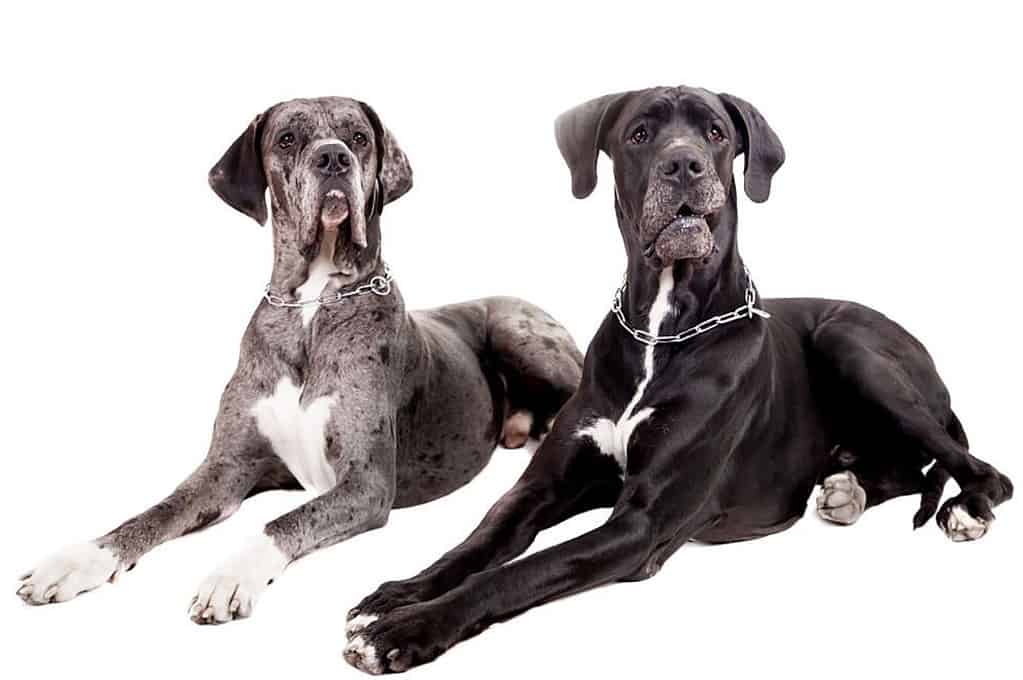
Exercise Needs
Labradane puppies require a decent level of exercise due to their huge size. Owners should prepare for one to two hours of activities, such as running, walking, and swimming. Regular exercise is necessary to release excess energy and keep them healthy and happy.
Brisk walks are suitable exercise while also providing an opportunity for bonding between owner and pet.
Great Dane Lab Shedding
Great Dane Lab mixes shed fairly regularly and requires frequent grooming due to their large size. They have short coats that shed moderately throughout the year. However, twice yearly, they can experience a shedding season when they lose more fur than usual.
Great Dane Lab Breeders
If you want to adopt a Labradane puppy, find a reputable breeder. They must prioritize the health and well-being of their dogs. Several Great Dane Lab mix breeders exist, but not everyone is equal.
Look for a breeder who conduct health screenings on both parent dogs and provide testing proof. These tests should include hip and elbow evaluations. It is to check for potential dysplasia issues common in larger breeds.
It’s also worth considering adoption from rescue organizations or animal shelters. Mixed-breed dogs need loving homes as much as purebred ones do! A rescue can help save money since adoption fees typically cost less than purchasing from a breeder or pet store.
| Breeder/Rescue Center | Location | Type |
|---|---|---|
| Lankas Labs | Atwood, Kansas | Breeder (Labrador Retrievers) |
| Service Dogs by Warren Retrievers | Madison, Virginia | Breeder (Labrador Retrievers) |
| The Service Dog Academy | Seattle, Washington | Breeder (Labrador Retrievers) |
| D & D’s Kennel | Abbeville, Georgia | Breeder (Great Danes) |
| Haus of Blues Kennels | Joliet, Illinois | Breeder (Great Danes) |
| K-Danes | Brooksville, Florida | Breeder (Great Danes) |
| Labrador Retriever Rescue | Pompton Plains, New Jersey | Rescue (Labrador Retrievers) |
| Lab Rescue LRCP | Annandale, Virginia | Rescue (Labrador Retrievers) |
| Great Dane Rescue of the Carolinas | Charlotte, North Carolina | Rescue (Great Danes) |
| Haus of Blues Kennels | Eagan, Minnesota | Rescue (Great Danes) |
Great Dane Lab Health And Care
The Labrador great dane mix is generally healthy and has a life expectancy of 8 to 12 years. They may still be susceptible to elbow and hip dysplasia, wobbler syndrome, ear infections, heat exhaustion, heart, eye, and digestive issues.
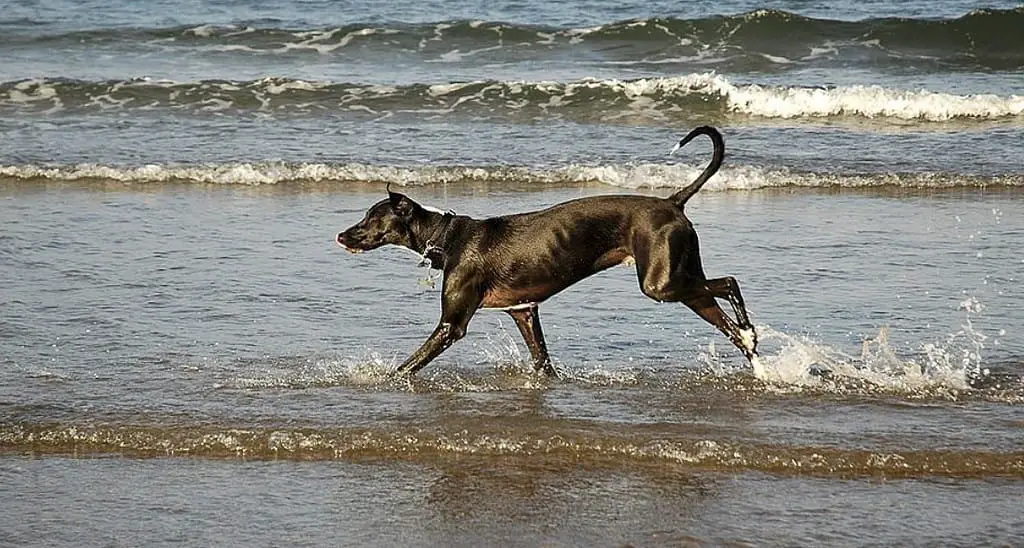
Labrador Health
Labrador retrievers are generally healthy dogs, with 10 to 12 years of lifespan. However, they are prone to hip and elbow dysplasia and ear infections.
Hip dysplasia is a genetic disorder that affects the hip joint’s development and function. It can lead to arthritis and mobility problems.
Proper nutrition, exercise, and regular veterinary checkups can help prevent or manage these health concerns. Long walks or playing fetch helps keep them physically fit.
Great Dane Health
Great Danes are generally healthy dogs but can be prone to certain health issues due to their size and genetics. One of the most common health concerns in Great Danes is bloating or gastric torsion.
This occurs when the stomach fills with gas or fluid and twists on itself. It cuts off the blood supply and causes severe pain and potentially life-threatening complications.
Cardiomyopathy, a heart disease affecting Great Danes, can also be passed down to Labradanes.
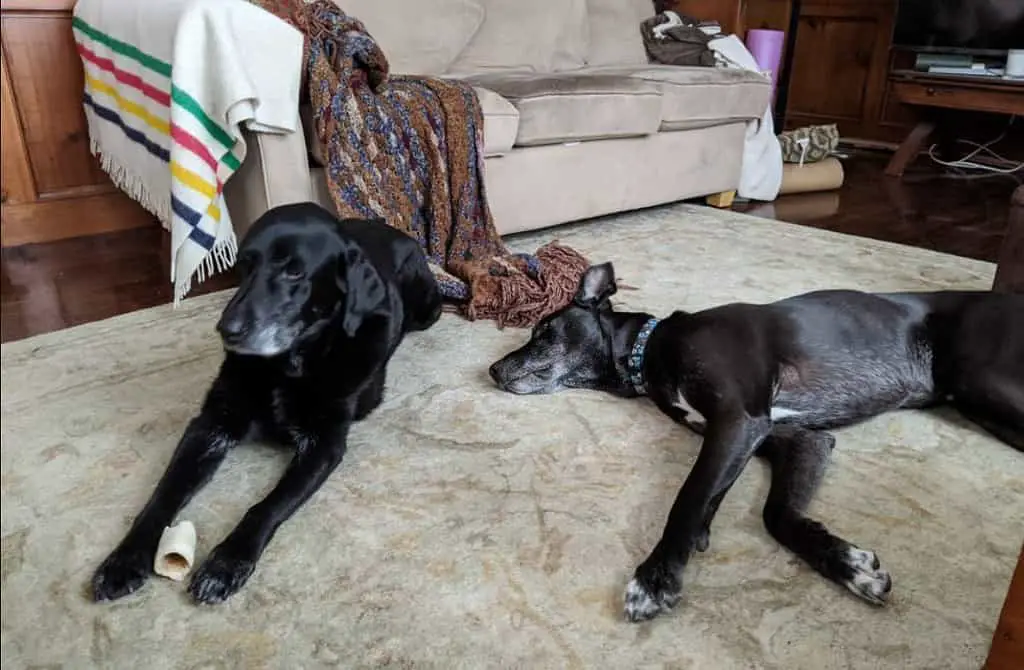
Great Dane Lab Health
The Great Dane Lab mix is generally healthy, but like all dogs, they may be prone to certain health issues. Common health problems associated with this breed include hip and elbow dysplasia, bloat, heart disease, heat exhaustion, and digestive issues.
Hip dysplasia occurs when the hip joint does not develop properly. It can lead to arthritis and lameness in later life. Elbow dysplasia can also cause discomfort in movement for the dog.
It’s crucial to keep your Great Dane Lab mix at a healthy weight during the growth period. It will prevent the risk of skeletal deformities during puppyhood. Extra stress on a weak structure can lead to serious problems like Wobbler Syndrome.
Labradane owners must monitor their dog’s health closely. Regular check-ups with a veterinarian will help catch any potential problems early on.
Wobbler Syndrome –
Wobbler Syndrome is among the most common health concerns in Lab Great Dane mix. This is a spinal cord condition that affects giant breed dogs. It results in spinal cord compression, leading to nerve damage and eventual paralysis if left untreated.
Wobbler Syndrome is a genetic disorder. It can result from rapid growth rate, abnormal bone development, and poor nutrition habits.
Proper nutrition during puppyhood by feeding low-calorie dry dog food will prevent excess protein intake. It will support healthy weight and muscular development.
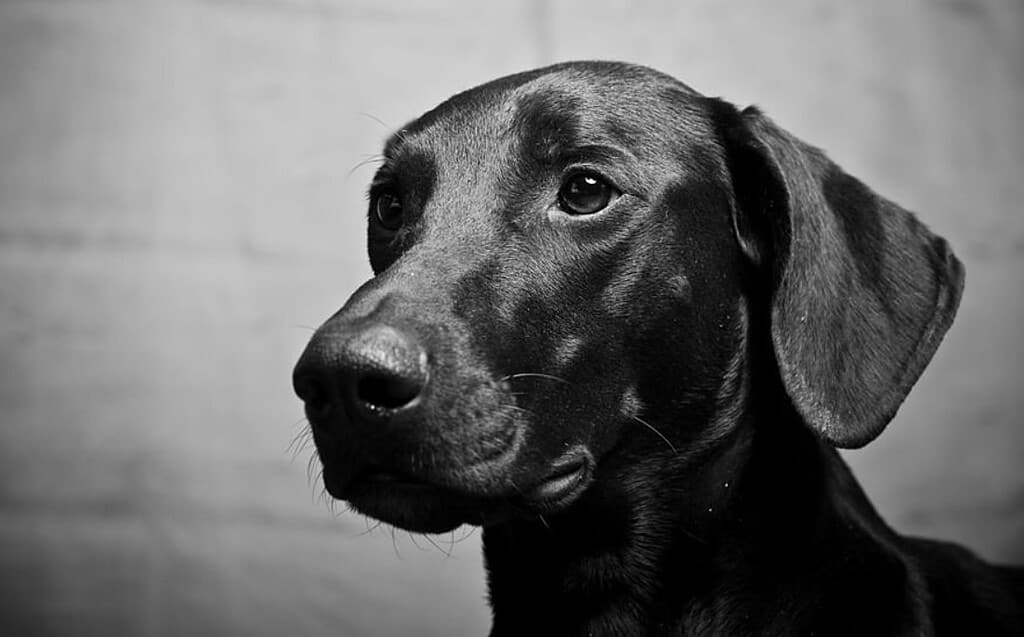
Great Dane Lab Mix Genetics And Potential Issues
Combining the Great Dane and Labrador Retrievers results in genetic diversity. However, these mixed breed dogs can inherit genetic issues from both parents.
Mobility issues are common in Great Danes and Labradors, so hip and elbow dysplasia may be potential concerns for Labradanes.
To ensure your Labradane lives a long and healthy, prioritize regular vet check-ups and preventative care. Proper diet and daily exercise are essential to maintaining a healthy weight and happy life.
Great Dane Lab Mix Drooling Concerns
Lab Great Dane puppies drool, as both parent breeds have looser lips and jowls. While many owners of these affectionate breeds are used to some level of slobber, excessive drooling might indicate underlying medical conditions. Oral infections or digestive issues can be a few.
Great Danes tend to drool more than Labs due to their facial structure. Potential owners should prepare for this aspect of owning these giant breeds.
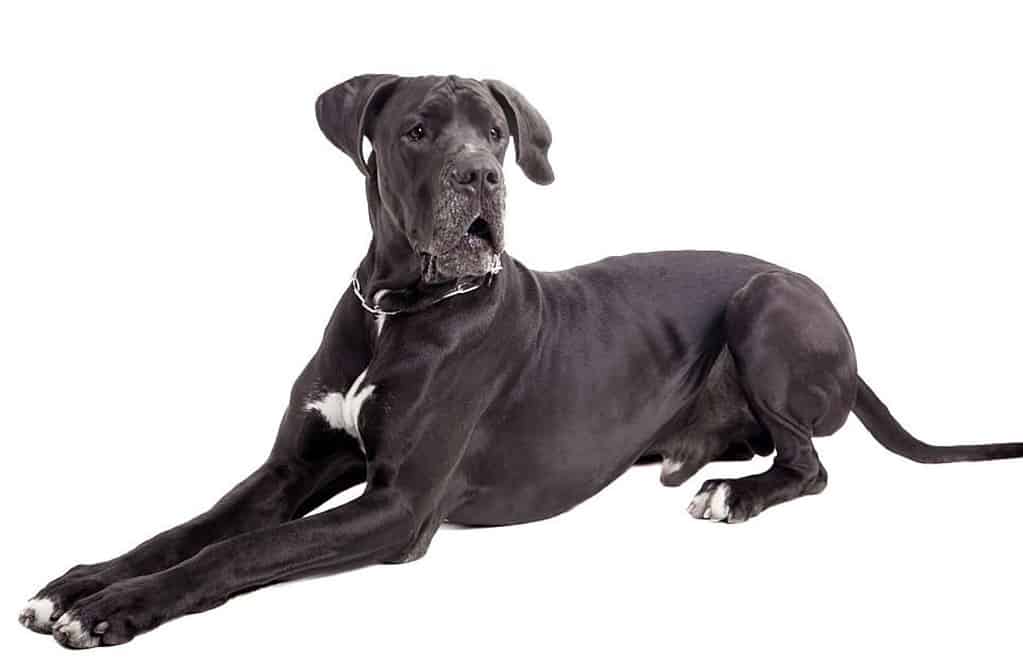
Should I Adopt A Lab Great Dane Mix?
Consider your lifestyle and experience with dogs before deciding to adopt a Lab Great Dane mix pup. If you have a big backyard, time, and resources to care for these “Gentle Giants,” they make an amazing addition.
Where Do You Live?
When considering adopting a Lab Great Dane mix, assess where you live. These dogs require adequate space to move freely due to their imposing size and high energy levels. However, this doesn’t mean that living in an apartment should rule out the possibility of owning a Labradane.
Are You Normally At Home?
Another crucial factor to consider before adopting a Great Dane Lab mix is whether you’re normally at home. These family dogs thrive on human interaction. They can develop separation anxiety if left alone for long periods. It might not be the best fit if you have a busy work schedule or travel frequently.
Are You Active?
The Great Dane Lab mix is an active dog. If you’re considering adopting, assessing your activity level beforehand is essential. This is not a dog for a couch potato.
This breed thrives in active households with owners who enjoy participating in outdoor activities. A Labradane puppy may not be the best fit if you have a more sedentary lifestyle.
These dogs can quickly become bored without proper physical activity and develop destructive behaviors.
Do You Have Experience With Dogs?
Assessing your experience with dogs is also important. While these larger dogs make loving and loyal pets, they require experienced owners. If you have experience with dogs and are comfortable handling larger breeds, a Labradane could be perfect.
Can You Afford Their Care?
When adopting a great dane lab mix, also consider the cost of caring for these dogs. Labradanes are relatively large breeds and require regular veterinary visits, food, grooming supplies, and toys. These expenses can add up quickly.
To determine affordability, factor in the cost of high-quality dog food meeting your dog’s nutritional needs. Furthermore, Great Dane Labs tend to develop health problems due to their size and growth rate during puppyhood.
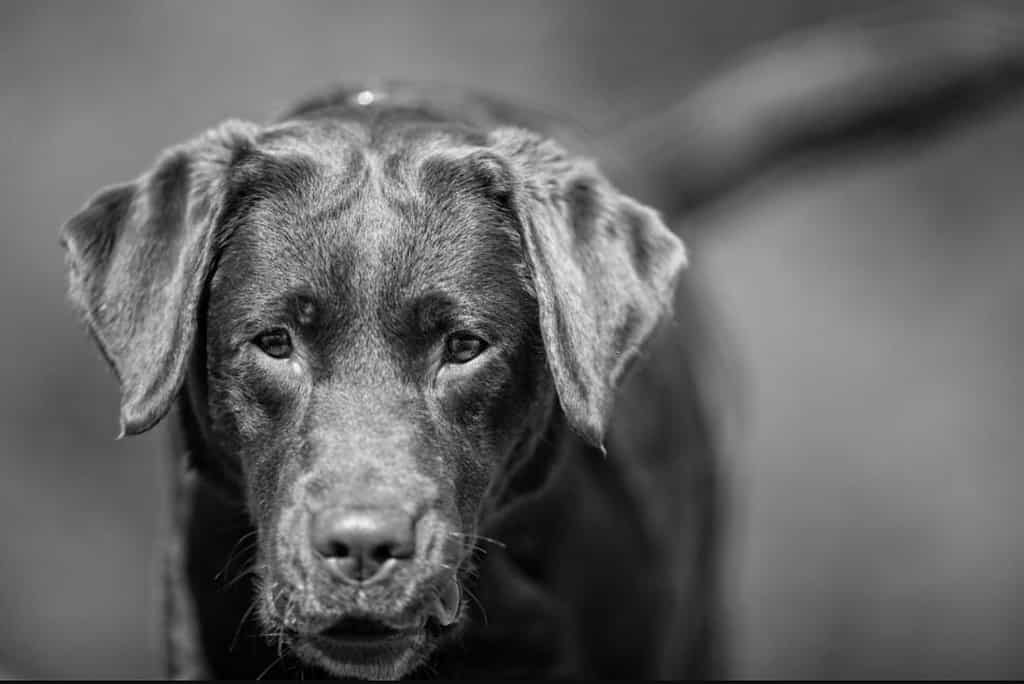
FAQs About Labradanes
Are Great Dane Lab Mixes Good Dogs?
Yes, a Great Dane Lab mix can be a great dog. This crossbreed has a loyal and playful temperament. They are also intelligent and trainable. However, due to their large size, they will require adequate space and physical activity to maintain a healthy weight.
When Are Labrador Great Dane Mixes Fully Grown?
Labradanes, are large breed dogs that typically reach their full size between 1 and 2 years old. Due to their parent breeds’ different growth rates, Labradanes may have a slower growth rate.
How Much Does A Lab Great Dane Mix Cost?
If you’re interested in adopting a Labradane, be prepared to spend between $500 and $1,500. The cost of this designer dog breed can vary based on the breeder’s location and reputation. The puppy’s age, health status, and whether or not it comes with papers are other factors.
Do Great Dane Lab Mixes Make Good Family Pets
Yes, Lab Great Dane mixes make excellent family pets. These gentle giants are friendly, intelligent dogs that thrive on human companionship. They make great playmates for kids and other family members. Labradanes absolutely love being part of an active family.
Author Profile

- In House Labrador Trainer
- Samta is an experienced Labrador trainer and enthusiast with over 5 years of hands-on experience, contributing invaluable insights and advice to Labradorandyou.com. Her deep understanding of Labrador temperament and intelligence underpins her effective training techniques and product recommendations. Through firsthand experience of the joys and challenges of raising Labradors, Samta's articles provide expert advice for both seasoned and new Labrador owners, covering training, care, and innovative product selection. Her commitment to enhancing the well-being of Labradors and their owners permeates her work, making it an indispensable resource for Labrador enthusiasts
Also by the author
-
 FAQNovember 16, 2023Why Is My Dog Pooping So Much? MUST KNOW Facts
FAQNovember 16, 2023Why Is My Dog Pooping So Much? MUST KNOW Facts
-
 FAQNovember 16, 2023Why Is My Dog So Skinny? 9 Reasons With Solutions
FAQNovember 16, 2023Why Is My Dog So Skinny? 9 Reasons With Solutions
-
 Mix-BreedsNovember 16, 2023Straight Haired Labradoodles Complete Guide: All You Need To Know
Mix-BreedsNovember 16, 2023Straight Haired Labradoodles Complete Guide: All You Need To Know
-
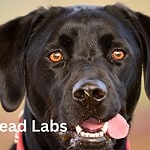 Lab-TypesNovember 6, 2023Block Head Labs: Are They Better And Healthier?
Lab-TypesNovember 6, 2023Block Head Labs: Are They Better And Healthier?
